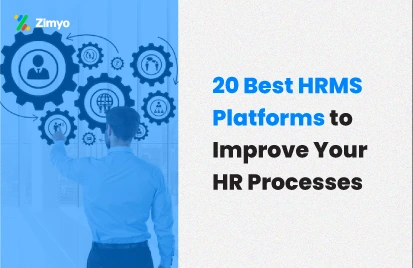The central government has approved New-Wage Code Bill 2021 (not implemented yet), which is likely to impact India’s 500-million-strong labour force in a large way. However, the process is underway to finalize it, but this topic has become a matter of discussion in every nook and corner. Reports from news suggest the law will be effective from April 1, 2021.
The Indian government is planning to implement the four labour codes that have replaced over 40 archaic central laws. One thing that has gained the attention of the public eye is the new bill’s impact on employees’ cost to the company (CTC) and the number of working hours in a week. The bill is also going to affect employers’ wage bills.
Understanding the new wage code bill:
The core intent of the new wage code is to streamline and simplify the existing labour laws, thus promoting a uniform definition of wages across all segments of the same. This new code will subsume the four labour laws:
- Minimum Wages Act
- Payment of Wages Act
- Payment of Bonus Act, and
- Equal Remuneration Act
This code has resulted in organizations and industries analysing and understanding the impact of the same under each of these subsumed laws.
How the new wage code bill will impact you?
As defined under the new codes, the term “wages” means remuneration provided to the employee. It is subject to certain specified exclusions, such as bonuses, pension, conveyance allowance, PF contributions, overtime, commission, gratuity, HRA or housing benefits, etc.
Currently, most organizations follow a uniform wage structure in which the basic salary ranges from 25% to 40% of the CTC of the employee, and this forms the basis for both provident fund and gratuity contributions.

However, now an employee and employer’s contribution to PF (Provident Fund) will go up and employee’s take-home salaries are expected to reduce, as basic salary is expected to be a minimum of 50% of the CTC because the government is planning to increase the contributions towards provident fund (PF) and other post-retirement schemes.
The new code has also impacted the way gratuity is calculated. Now, gratuity will have to be calculated based on a larger base, which will lead to an increase in gratuity payments and employers’ contribution to their retirement corpus.
One good thing about this code is that it not only provides social security to organised sector employees but also to informal sector workers like gig and platform workers.
What challenges does it present to the organizations?
Now, we have seen how these new regulations are going to affect the employee’s CTC structure, organizations need to be wary of the compliance standards to avoid any legal penalties.
Change is overwhelming and we understand that it will be challenging for businesses to adhere to these changes. From calculating the salaries as per the new norms to managing statutory compliances, everything needs a thorough revision. However, with an automated payroll system, you can counter these latest changes.
For this, you need to opt for a tool that can automate tedious payroll processes, eliminate timesheet errors, and reduce your reliance on human resources for the transfer of data or manual calculations.
Highlights of robust Payroll Software are:
Opting for an automated payroll software can offer you numerous benefits including:
-
Compliances:
From TDS computation to bonus calculation of individual clients, everything has been automated according to updated policies.
-
Benefits and Reimbursements:
The system enables you to provide enticing benefits and faster reimbursements to your human capital.
-
Salary Computation:
Calculate your workforce’s salary by attendance, penalty, leave policies, and more.
-
Loans & Advances
Cumulative data management of employee’s personal and professional loans and other benefits and privileges.
-
Minimum Wages
Thorough state-wise minimum wages updates and easy disbursal of your employees’ salary. This can be done by the category applicable dynamically.
-
Expenses and Invoices
Keep track of employee expenses of all sorts including travel, accommodation, and much more. Additionally, get an automated recording of invoices.
Having an automated tool for processing payroll can save you a lot of time and efforts. Therefore, if you haven’t started adopting new technologies to manage your workforce, then it’s high time you start doing so.
Also Read: TDS Challan: FAQs and all you need to know




